Can anybody tell me when you harvest and how you store golden rod grubs for mid winter use.Thanks for any help. 


October 26, 2009 at 11:59 pm
#1300536
IDO » Forums » Fishing Forums » Ice Fishing Forum » golden rod grubs
Can anybody tell me when you harvest and how you store golden rod grubs for mid winter use.Thanks for any help. 


I am picking them right now and I am leaving the grubs in their bulb state, and storing them in a paper grocery bag until hard water comes and open them up as I need them. I put them in alittle corn meal in a camera film container.
 WeFish
WeFish
I’m picking them right now to. i open them and then store them in the freezer until i use them. the grubs blood is like anti freeze they are good up to -40 degrees and they don’t take long to thaw out. ice season is around the corner. 

 i found some of my info at http://www.ohiogamefishing.com i’m also going to harvest acorn grubs
i found some of my info at http://www.ohiogamefishing.com i’m also going to harvest acorn grubs
don’t suppose someone can post pictures of what they look like. in bulb form and after. I have no idea what your talking about but wouldn’t mind learning. 
I don’t know how to put pics on here cause i’m a fisherman not a computer geek. theres video on youtube.
Re: golden rod grubs
One of the great things about autumn across much of North America is the annual show put on by Goldenrods. These relatively common native wildflowers–placed by Linneaus long ago in the genus Solidago–spend all summer making rough green foliage, but when days grow short in September every Goldenrod worth its gene pool bursts into bright yellow hues that provide its common name. (The one excused exception to this golden extravaganza is S. bicolor, which has WHITE flowers and appropriately is called “Silverrod.”
ALL GALLS ARE DIVIDED
INTO THREE PARTS
One of the great things about autumn across much of North America is the annual show put on by Goldenrods. These relatively common native wildflowers–placed by Linneaus long ago in the genus Solidago–spend all summer making rough green foliage, but when days grow short in September every Goldenrod worth its gene pool bursts into bright yellow hues that provide its common name. (The one excused exception to this golden extravaganza is S. bicolor, which has WHITE flowers and appropriately is called “Silverrod.”)
In the Carolinas alone there are as many as 39 Goldenrod species that range in height from less than a foot to six feet or more. A few are found in shady wooded spots, but the majority grow in sun-loving habitats like old fields and roadsides–places that each fall become works of floristic art that beg NOT to be bush-hogged by farmers or highway workers. Even at turnpike speeds, a driver whizzing past a stand of Goldenrod is struck by the glory of its intense yellow, but it’s not until one dismounts the auto and enters a field on foot that the real joie de Solidago is truly experienced. It is then one realizes every Goldenrod flower head is a microcosm unto itself, inhabited by some combination of nectivorous bees and beetles and wasps and flies (left) that serve the plant as pollinators–but only if they avoid the resident Crab Spiders, praying mantids, or Carolina Anoles that like to snack on busy little bugs. Some of Goldenrod’s insect inhabitants aren’t so noticeable, however, because they hide within living tissue of the plant itself in structures called “galls.” Among Goldenrods there are three common kinds of galls; this week at Hilton Pond Center we found examples of each.
Galls themselves are very interesting plant structures influenced by various agents, including insects, fungi, viruses, chemicals, and mechanical damage. For example, when certain insects lay eggs on vegetation, their larvae hatch and tunnel into host tissue where they spend their hours chomping away on the plant’s living cells. Such ravenous ingestion of food by grubs or caterpillars invariably leads to excretion of significant amounts of waste, and these metabolic by-products apparently have an effect on the host plant. Goldenrod responds to internal herbivores by producing structures that become galls that are rather like tumors–the plant’s own cells gone haywire and growing in a very different way than normal. In Goldenrod each of the three gall types is caused by a different insect, and all three galls are quite different in shape.
The first of these Goldenrod galls–and the most common around Hilton Pond–is the “apple gall” or “ball gall,” named for its spherical shape and sometimes red color (above). This gall forms when, in late spring, a small fly with spotted wings and the appropriate name of Goldenrod Gall Fly, Eurosta solidaginis, lays her even tinier egg on a fast-growing Goldenrod stem. After the egg hatches about ten days later, the hungry larva eats its way into the stem and forms a feeding/living chamber. This stimulates the host plant to create the ball gall, which provides more space (right) and a lot more succulent Goldenrod cells on which the grub can dine all summer long.
Initially, the ball gall is bright and shiny green like the rest of the stem, but as the runaway gall growth replaces “normal” cell division, once-vibrant leaves near it wither and turn brown, and the gall eventually becomes mottled with purple and looks even more like an apple. The density of cells within the ball gall is surprising–about the consistency of damp wood–which makes it hard to slice open the gall without harming the grub (or one’s thumb).
Safely sheltered within the gall when winter cold arrives, the now-mature quarter-inch-long fly larva (left) slows its metabolism and replaces much of its internal water with glycerol, a compound that serves as antifreeze. In northern states, ice anglers collect Goldenrod ball galls and their chilly inhabitants, cut open the ball, and use the hibernating grubs for fish bait when snow-covered ground makes earthworms hard to come by. If a gall goes undisturbed by humans or gall-invading predators, the larva inside slumbers until spring when warm days stimulate it to eat a narrow passageway radiating from its feeding chamber. The larva stops tunneling just short of the gall’s outermost layer of cells and goes back to the main chamber to form a pupa, emerging in a few weeks as an adult fly able to pop through the thin-walled porthole on what has become a hard, brown, one-inch gall (below right). Adult Goldenrod Gall Flies do not eat and last only about ten days, living only to mate and produce a new generation of gall-causing young.
It’s worth noting that life in a ball gall is not all peaches and cream for the fly larva. Eurytoma gigantea is a parasitoid wasp that uses its short, pointed ovipositor to penetrate the gall and lay eggs in the gall chamber, while Downy Woodpeckers are known to peck open galls to get the grubs within. Industrious Goldenrod Gall Fly larva that cause their host plants to make large galls with thick walls can avoid being parasitized by wasps, but woodpeckers preferentially select the biggest galls in a Goldenrod patch–likely because big galls contain bigger grubs. Thus, in fields with lots of wasps there are more big, thick-walled galls, in areas with many woodpeckers the galls tend to be smaller, and in locations where both wasps and woodpeckers abound the galls tend to be of intermediate size. Ah, the wonders of natural selection!
The second Goldenrod gall we found in a small meadow at Hilton Pond Center is sometimes confused with the ball gall, but a closer look shows it is spindle-shaped (above) rather than spherical, hence the name “elliptical gall.” This gall is caused by a moth whose scientific name is quite a bit longer than its body: Gnorimoschema gallaesolidaginis, the Goldenrod Gall Moth. The moth’s life cycle is opposite from that of flies that cause ball galls; it is autumn–not spring–when the female oviposits. The moth chooses a lower leaf on a Goldenrod stem and lays an egg that, in turn, overwinters on the leaf. The larva hatches out the following spring and makes its way from the now dead leaf to a newly sprouted Goldenrod, where it eats its way through a bud and into the stem. In response to this invasion, the Goldenrod forms an elliptical gall around the area where the caterpillar took up residence. The larvae feeds and develops all summer and ultimately tunnels out of its elliptical gall before retreating and plugging the hole with silk and Goldenrod “sawdust.” With its escape hatch in place, the caterpillar forms a pupae within the former feeding chamber and emerges as an adult moth by early fall, leaving behind a cavity that is often used as winter quarters by small spiders and various insects. Interestingly, the exit hole is beveled–wider at its outer rim than at the inner–so the plug is shaped rather like a bathtub stopper; this makes it easy for the newly emerged Goldenrod Gall Moth to pop the plug, but hard for a potential predator to push it in.
The third and least common Goldenrod gall at Hilton Pond Center looks almost as if it is a normal part of the plant. Called a “bunch gall,” “rosette gall,” or “flower gall,” it occurs when the Goldenrod Gall Midge, Rhopalomyia solidaginis–a miniscule fly–lays its egg in a leaf bud. After the grub hatches, its presence somehow keeps the stem from growing and elongating, even though the Goldenrod continues to produce leaves. This results in a tight, flower-like cluster of foliage (above left and below), usually at the top of the Goldenrod’s main stalk. Although the Goldenrod Gall Midge is the only insect known to cause a bunch gall, the heavily leaved cluster may become home to a diverse assemblage of arthropods, including spiders and other midge species; for this reason, the Goldenrod Gall Midge has been referred to as an “ecosystem engineer.” Most authorities say the bunch gall is a Goldenrod species indicator, i.e., it occurs only on Canada Goldenrod, Solidago canadensis, and that higher susceptibility to bunch galls is an inherited trait within populations of that species. One other curious factoid about the Goldenrod Gall Midge is that the female demonstrates “monogeny,” meaning that throughout her reproductive life she makes either male or female offspring, but never both.
The really unusual thing about all these Goldenrod galls is they don’t seem to have a debilitating effect on Goldenrods themselves–even in those occasional Goldenrod patches in which nearly every plant appears to be gall-bearing. We suppose forming a gall might rob an individual Goldenrod plant of energy that otherwise would be devoted to flower production–thereby decreasing its reproductive potential–but vast fields of Solidago that bloom each fall across the U.S. and Canada are a pretty good sign Goldenrod is not being driven to extinction by flies, moths, or midges that cause galls to form. Around Hilton Pond Center, at least, there seems to be a natural balance between gall insects and Goldenrods–even if all those galls ARE divided into three kinds.
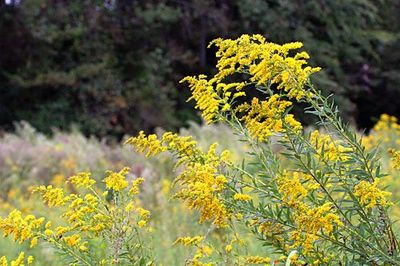
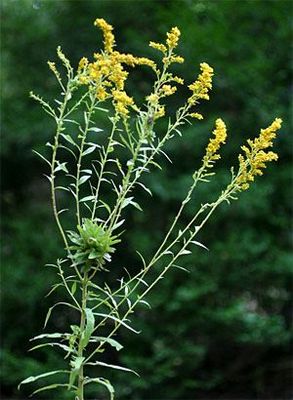
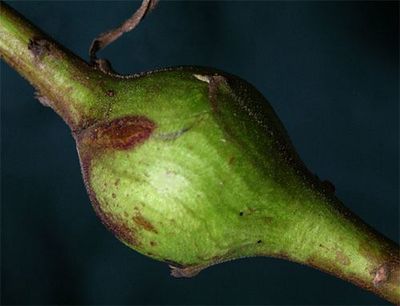
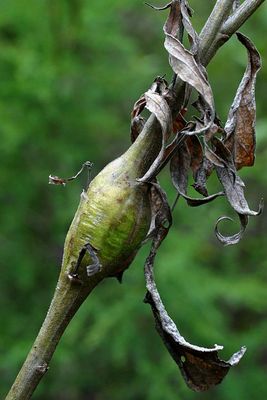
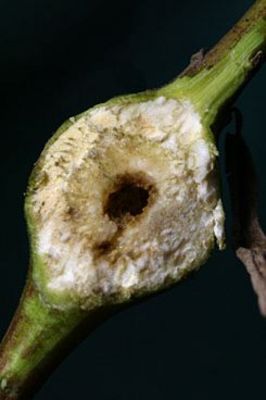
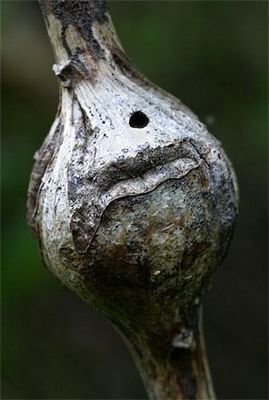
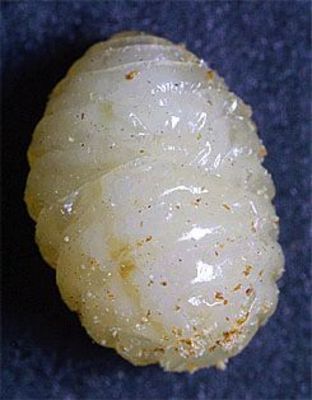
thanks a lot wefish great info, from great people on a great site. 


Hope its fun for you guys. I gave it up when I was 9 and found out you could get a weeks worth of waxies for a dollar or so.
schlankki have you ever used acorn grubs before and if so , with any success. thanks for the tip. 

Quote:
I’m picking them right now to. i open them and then store them in the freezer until i use them. the grubs blood is like anti freeze they are good up to -40 degrees and they don’t take long to thaw out. ice season is around the corner.


i found some of my info at http://www.ohiogamefishing.com i’m also going to harvest acorn grubs
You must be logged in to reply to this topic.